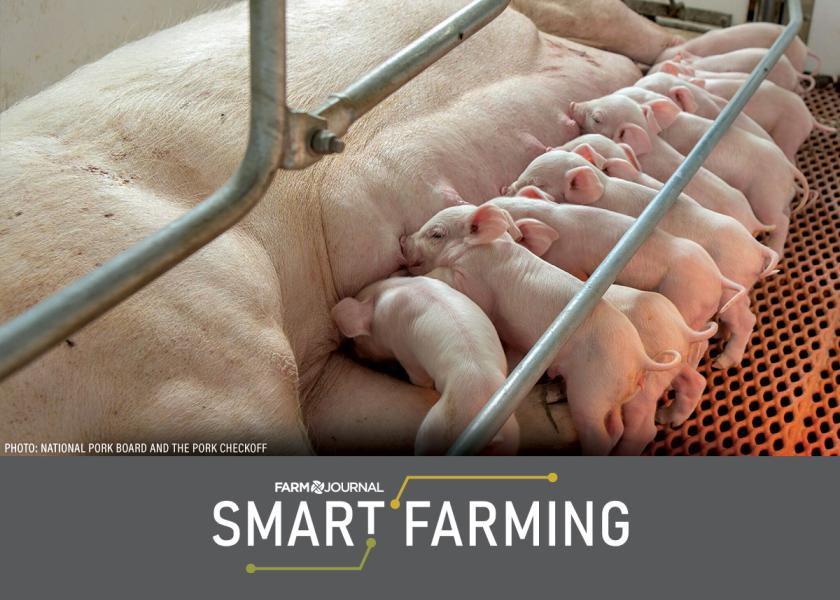The Superpower the Industry Needs on Swine Farms Now

Is the ability to focus on the farm a superpower? It might be. In today’s modern pork production systems, the amount of data available combined with the number of challenges coming from all directions makes the concept of “focus” easier said than done.
Brad Eckberg, business analyst at MetaFarms, Inc., spends a lot of time evaluating data, talking to producers and visiting pork production systems around the country. He believes the difference between systems that are performing really well and those that are not comes down to focus – specifically in the dollars to dimes.
“Those companies that are exceeding have their foot on the gas pedal every single day, all the time. They are really locked into data,” Eckberg says.
It’s easy to get “in the weeds” of day-to-day pork production, which leaves little time to analyze on-farm data. But Eckberg says monitoring data on a frequent basis is key.
“You don't know what you don't measure,” he points out. “Producers need to be able to say, ‘Here is where we're at, here is where we want to be as a goal for an improvement.’”
A Look Back at 2023: An Expert’s Perspective
Looking at the MetaFarms numbers for 2023, Eckberg notes several areas of improvement throughout the pork industry, but also some areas of opportunity.
On a bright note, feed costs have gone down. Nursery mortality has improved, too. In 2023, nursery mortality averaged 3.99% as compared to 4.41% in 2022.
On the sow side, productivity continues to go up, Eckberg says. The average in their database is 25.8 pigs weaned per mated female per year. In 2022, it was 25.6 pigs, which was unchanged from 2021 and up from 2020 at 25.1 pigs.
“The gold bar standard for sow farms would be pigs weaned per mated female per year, which looks at how efficient sows are at producing weaned pigs,” he explains. “The 2023 average continues to increase and will be the fourth year in a row it’s increased.”
Total born averages continue to increase, too. He says this can be attributed to genetic improvements. In 2023, the total born average was 15.3 pigs. In 2022, the industry was at 15.0 pigs as compared to 14.8 pigs in 2021 and 14.7 pigs in 2020.
A number that has flatlined across the database and could use improvement is pre-wean mortality. 2023 looks like it's going to close out about 14.4% compared to 14.3% in 2022, 14.1% in 2021, and 14.5% in 2020.
“Finishing mortality was another iffy area, for lack of a better word,” he says. “It hit an all-time high in 2022 at 5.31%. In 2023, it was virtually unchanged.”
Mortality Challenges U.S. Pig Farmers
There’s no question the most alarming statistic for the pork industry continues to be sow death loss.
“We are going to close out 2023 with an all-time high in sow death loss in our platform at 15.3%,” Eckberg says. “Last year, sow death loss was 14.3%. We increased a whole percent again from 2022. We are definitely seeing a trend in the wrong direction. It’s one of the largest increases we've seen in our history.”
In addition, grow-finish mortality reached an all-time high in 2023, around 7.61% which would be up from 6.87% in 2022, 6.79% in 2021 and 6.26% in 2020.
A Gut Feeling Isn’t Enough
“Producers who are focused, paying attention and using the data to make decisions in planning, are the ones who are thriving despite uncontrollable circumstances,” he says.
Although the data alone can’t answer the question to why pigs are dying, it can provide helpful insight.
“Everyone has a lot going on at the farm. If you're relying on your gut or your employee’s, how can you remember all that information and history to make the best decisions day in and day out? We can't put as much onus on a person, whether it's a barn tech or a farrowing barn manager, to remember everything and then be able to communicate that,” Eckberg adds. “Keep in mind they also have their own personal life, and they are busy during the day.”
He says that's the advantage to having data at your fingertips.
“Workers are in the barn, right with that sow putting the data in,” Eckberg says. “It’s updated in reports, and they can utilize scheduled reports to generate automatically.”
Editor’s Note: This is the first of a four-part series. The numbers shared in this story are preliminary 2023 numbers. The 2023 MetaFarms database represents 1.1 million sows from 460 farms as well as 24 million nursery pigs started and about 11 million single-stocked wean-to-finish pigs in 4,000 groups. As data flows in, updated numbers will be released from MetaFarms. MetaFarms does not release information on its customers, and follows strict benchmarking rules about which data is included in reports.
More from Farm Journal's PORK:
Sow Death Loss Reaches All-Time High in 2023: What Can Producers Do Now?
Keep Your Eyes Open: Ways to Reduce Wean-to-Finish Mortality
When the Data Gets Overwhelming: Key Metrics to Pay Attention to on the Swine Farm







